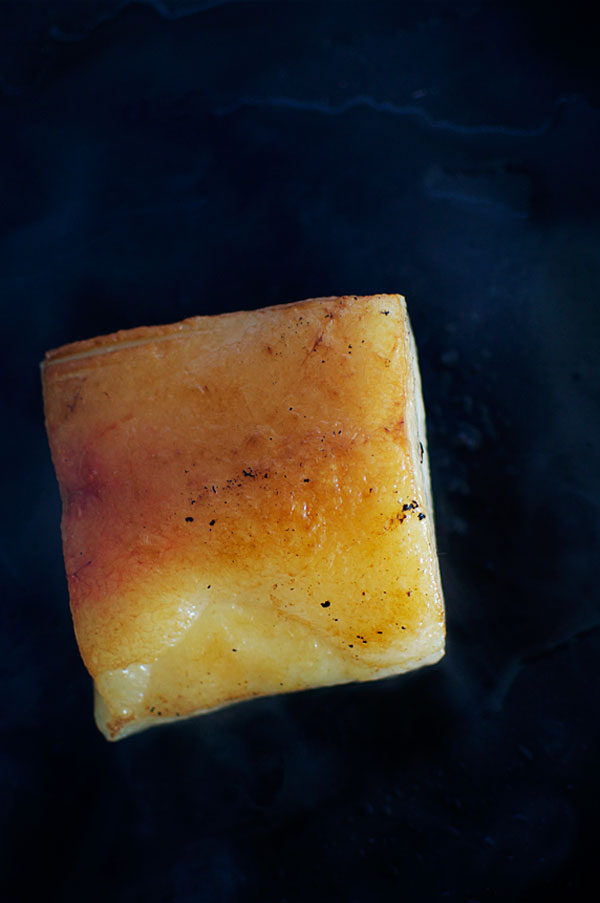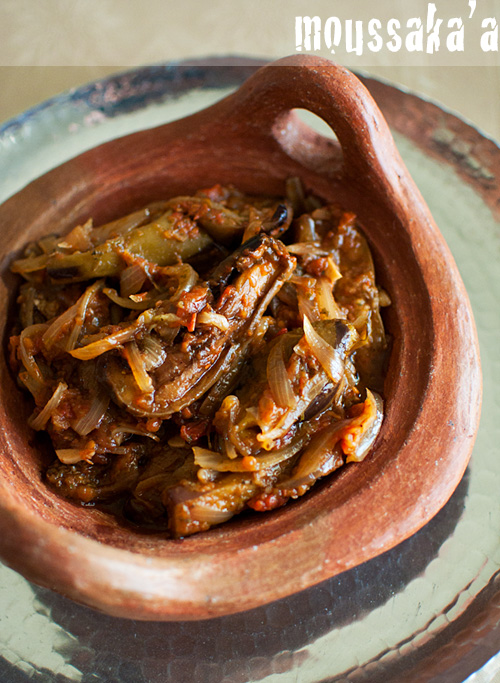
One of the most revered traditional breakfasts in Lebanon is a platter of raw liver, raw lamb muscle meat and raw liyyeh, sheep tail fat. Middle-Eastern sheep are a particular breed with tails that grow to a massive size. I’ve heard it said that up to one quarter of the sheep’s weight could come from its tail. The tail is pure, soft, white fat. For breakfast, along with the raw meat and liver, the liyyeh is sprinkled with salt and pimento and eaten with bread. It’s not for the faint of heart, especially the liver, but the initial reaction subsides when you take the plunge and eat some. I personally find that the flavour of liver, or anything for that matter, is milder when the food is raw.
Raw sheep tail fat is delicious, but, I also really like it barbecued on charcoal. The outside caramelises beautifully, and a bit of salt brings out a sweetness in the fat. It’s not greasy or oily, but rather creamy with a round, buttery mouthfeel. Here in Australia, sheep tail fat isn’t something you can find. My Lebanese butcher tells me that they tried, but failed, to raise Middle-Eastern breeds of sheep in Australia. Something to do with the weather and humidity causes the sheep to get sick… Don’t quote me on that.
So a few days ago, I find myself at AC Butchery in Leichhardt looking at a piece of lardo: cured pig fat. The fat is subcutaneous, which is the soft fat from underneath the skin of the pig (as opposed to visceral fat, which is intramuscular). The fat gets cured with salt. It’s sometimes flavoured with herbs and sometimes it’s also smoked. I couldn’t resist buying it – $15 a kilo for fat from a free range pig sounded like a financially wise investment. Today, I had a craving for the good old days back in Lebanon. No tail fat for me unfortunately, but the lardo did the trick. The Italians slice the fat thinly and eat it for antipasti, or use it as a topping for bruschetta, among other uses. I tried something else with the fat: seared on a hot pan until it goes slightly crisp and golden, flipped and then served with sauerkraut and hot english mustard. Delicious, and so nutrient and energy dense, I probably won’t have to eat anything else until winter arrives. Maybe I’ll hibernate for the afternoon…

9 comments
I love fat, and never understand the puritan streak which causes some people to eschew every last ounce of it, or worse, to turn their noses up in scorn or disgust at it. Sadly, I eat too much of it, so my body resembles it far too much, but oh my, yes to fat.
We ate so well in Lebanon, tried all kinds of wonderful specialities…including some of the raw liver…
Raw meat and raw liver with kess arak (don’t know the english name) is heaven!
Oh goodness. That’s a little confronting. Though I like to think I’d give it all a go if it was in the right setting.
Salt and fat together are such a delicious combination. The flavor, the mouth texture… it’s delicious, yet amazingly satisfying (I find, at least). One of my favorite Korean BBQ dishes is the intestines, which is a very fatty cut that comes with lots of visceral fat. Fat grilled over an open flame is truly delicious!
I would love to try sheep tail fat.
Looks good Fouad. Did you know lard has less cholesterol than butter – True! (Compare it on calorieking.com.au if you doubt me.) Yet the first thought most people have when they think lard is cholesterol. My mum always includes a good hunk of pig skin with it’s fat in any ragu she makes.
I’ll stick with bulletproof coffee for breakfast (mold free coffee, 2 tbs butter, MTC oil, blended) yum
This takes me back to when I was 12 in 1986 and I visited the motherland with my folks – Sicily. We were at this butcher in the village and he was cutting of bits of pig fat off a hanging pig and dipping it in salt and giving it to customers to eat there and then. Of course I had to try it and I did. YUM. I came back to Australia as a bit of a porker!!
Is that a healthy to eat? I am not really into raw food aside from fruits.. 🙂 Veggies are okey too.. 🙂
I am not sure if this is healthy in modern times.All this fat worked better when people were more physically active and walked for miles